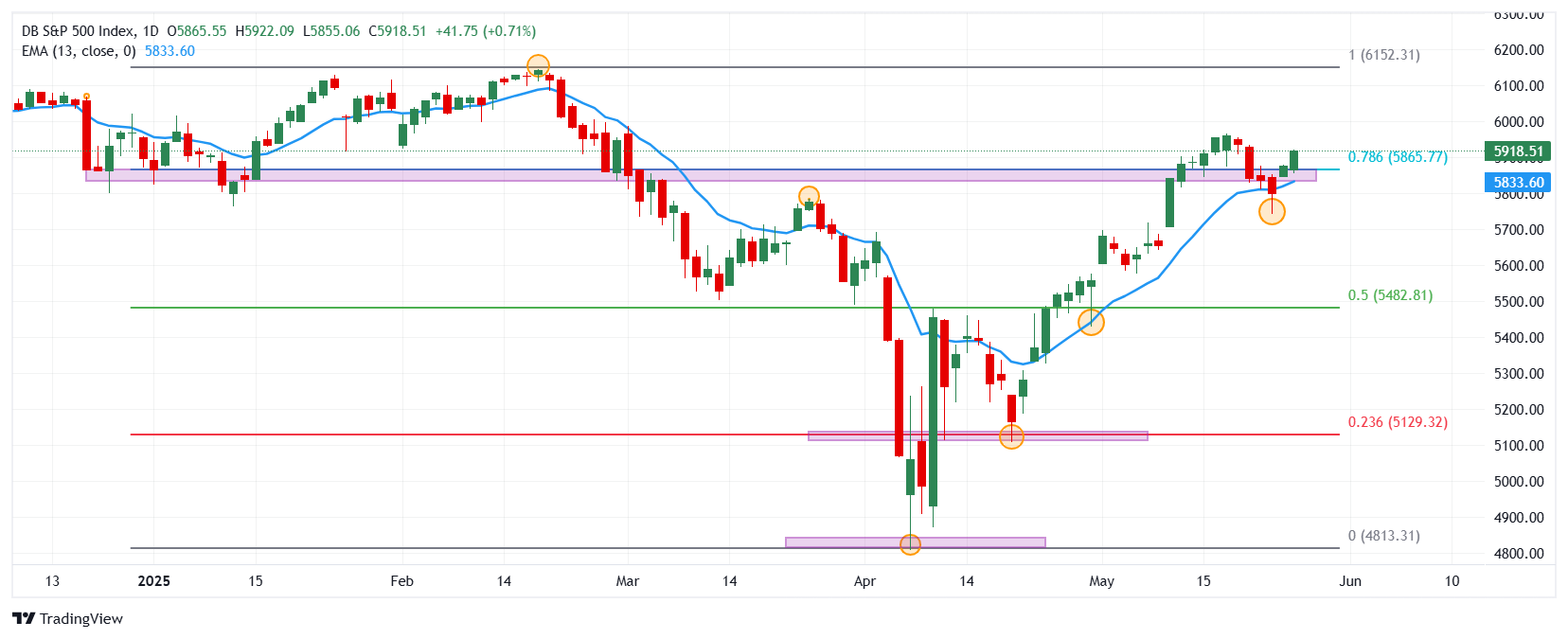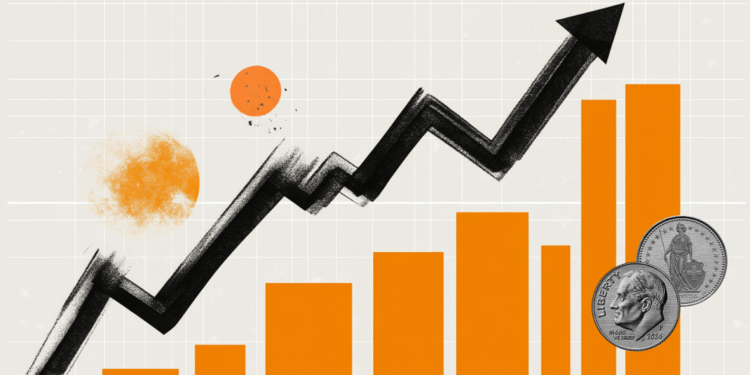- The S&P 500 stock index rises 0.71% today, reaching maximum of May 21 in 5,922.
- The CB consumer confidence index increased to 98 points in May, exceeding market expectations.
- The requests for durable goods fell by 6.3% in April, improving the analysts’ forecasts.
- The attention of investors will be in the FOMC minutes, to be published tomorrow.
The S&P 500 established a minimum of the day in 5,855, attracting aggressive buyers that promoted the index to a maximum not seen from May 21 in 5,922. At the time of writing, the S&P operates over 5,918, winning 0.71% on the second day of the week.
The S&P 500 extends its profits waiting for the FOMC minutes
According to information provided by the US Census Office, the requests for lasting goods decreased by 6.3% in April, improving market projections that expected a 7.9% drop.
At the same time, the Conference Board Conference Conference Index increased to 98 points in May, improving the 86 points recorded the previous month.
The focus of the operators will be in the publication of the minutes of the Federal Open Market Committee of the Federal Reserve (FOMC) to be released on Wednesday, May 28. Investors expect more clarity in the rhythm of interest rates, taking into account the commercial uncertainty caused by Donald Trump’s tariff rhetoric.
In this scenario, the S&P 500 advances 41 points, winning 0.71% today, two consecutive upward sessions, concluding Tuesday’s day in 5,918. The actions of Hologic Inc. (Holx) lead the profits in the stock index after making known an acquisition offer by TPG Inc. and Blackstone (BX), pretending to acquire the shares of Hologic (Holx) in a range between $ 70 and $ 72 per share. However, Holx has rejected the offer, no additional comments.
Levels to be considered in the S&P 500
The S&P 500 reacted upwards from a short -term support given by the minimum of May 23 in 5,742. The following key support is observed in 5.430, given by the minimum of April 30 in convergence with the exponential mobile average of 13 periods.
S&P 500 DAILY GRAPH

S&P 500 FAQS
The S&P 500 is a very often stock index that measures the yield of 500 public companies and is considered a wide measure of the US stock market. The influence of each company on the calculation of the index is weighted based on stock capitalization. This is calculated by multiplying the number of bought shares of the company for the price of the action. The S&P 500 index has achieved impressive yields: 1.00 $ invested in 1970 would have produced a yield of almost $ 192.00 in 2022. The average annual profitability since its creation in 1957 has been 11.9%.
Companies are selected by committee, unlike other indices included in established standards. Even so, they must fulfill certain eligibility criteria, the most important of which is stock market, which must be equal to or greater than 12.7 billion dollars. Other criteria are liquidity, domicile, stock capitalization, sector, financial viability, quotation time and representation of the sectors of the United States economy. The nine largest companies in the index represent 27.8% of the stock market capitalization.
There are several ways to operate with the S&P 500. Most of the Stred Betting retail runners and platforms allow operators to use contracts per difference (CFD) to make bets on the price direction. In addition, indexed funds, investment funds and quoted funds (ETF) that follow the price of the S&P 500 can be purchased. The most ETF liquid is the ETF of the London Stock Exchange. The most ETF liquid is the State Street Corporation Spy. The Chicago Mercantile Exchange (CME) offers futures contracts on the index and the Chicago Board of Options (CMOE) offers options, as well as ETF, ETF Inverse and ETF leverage.
There are many factors that promote S&P 500, but mainly it is the aggregate performance of the companies that compose it, revealed in their reports of quarterly and annual results. American and world macroeconomic data also contribute, since they influence investors’ confidence, which is positive drives profits. The level of interest rates, set by the Federal Reserve (FED), also influences the S&P 500, since it affects the cost of credit, which is largely depending on many companies. Therefore, inflation can be a determining factor, as well as other parameters that influence the decisions of the Federal Reserve.
Source: Fx Street
I am Joshua Winder, a senior-level journalist and editor at World Stock Market. I specialize in covering news related to the stock market and economic trends. With more than 8 years of experience in this field, I have become an expert in financial reporting.





